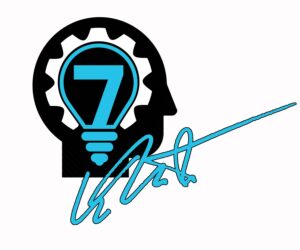(Post 11 in a series)
Ironically it has taken 11 blog posts to get to the place where most salespeople begin.
That is a lesson in itself. The irony is that most salespeople are searching for a better presentation and what they really need are better things before and after the presentation (and usually, they need to be conducting about ten times more presentations as well).
But this post series isn’t about work effort, it’s about technique and tactics. Just realize that you can become excellent at the play-by-play execution of a world-class presentation and can still get completely dusted by someone that simply outworks you (I’ll try to remember to create a post on the work ethic strategy after this series).
Anyhoo…..the actual Sales Presentation – how do we do that?
Let’s begin answering that by considering the client. Where are they in the process? What sort of things are running through their mind?
The three Golden Rules to observe in creating the best sales presentation in the universe are:
- Clients(all people) think 7 times faster than we can speak
- People love to buy but hate to be sold
- Frustrated and confused prospects never buy
Let’s focus on Golden Rule #3. Talking too long or using too technical vocabulary will confuse and/or frustrate potential customers. This is a very common sales crime that many salespeople inadvertently commit. Many salespeople believe if they just had more product knowledge, they could get so many more sales.
They are wrong.
If they understood buying psychology (and worked hard) they can dramatically increase their sales.
However; it is very typical for a talented new salesperson to achieve fantastic results in their first 90 days that begin to drop off afterward. This is because their natural enthusiasm during the honeymoon period at their new job has begun to wane and they are replacing their emotional impact with intellectual drivel. The presentation stops being as much fun for the client and turns into a data dump on information that invites the client to feel dumb and uninterested as the salesperson flexes all their superior knowledge on the poor client.
Bad move.
Consider a few important things when building out a great presentation:
- The average attention span of an adult in the United States is less than 30 minutes.
- you’ve already used 5-10 minutes
- People chunk information most successfully in groups of three.
- Break up your content into thirds
- You need to fulfill both informational and emotional needs.
- Buying decisions are equal parts rational and emotional.
Your allotment of time for your presentation needs to be about 15-18 minutes. If you divvy that up into thirds, that means that each segment of your presentation should be about five minutes in length with an intentional trial close after each part. Trial closes are better thought of as “Temperature Takers” where you ask the client if they are with you both emotionally and intellectually. Because their mind is spinning so much faster than your mouth, how can you make sure you are synched in with what they are thinking?
You ask them.
Crazy talk right?
In our next post, I’ll dive into what makes up a successful trial close and why it’s so important to ask these questions during the presentation instead of after.

Business owners and Entrepreneurs are invited to take my Free Online Assessment on the main page of the 7th Gear Website.
Other Articles of the Sales Series:










